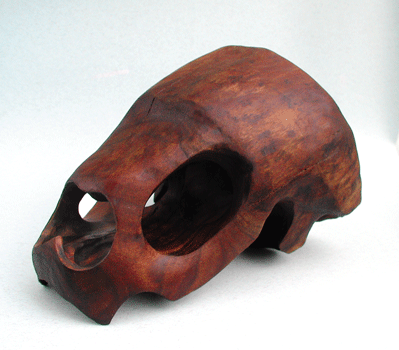

Joyce Clements Artist 50 Sunny Oaks Dr San Rafael CA 94903 415-868-1008
Leatherback Turtle
Life begins for the Leatherback turtle when it cracks through the shell of an egg and makes its way out. The hatchling has from sundown to sunrise to dig its way out of the sand nest and find its way to the ocean. If a baby does not reach the sea by daybreak it risks death by dehydration or being eaten by a predator.* Under “normal” circum-stances, only about 1 in a 1,000 of the baby turtles will survive the 15 years it will take to reach maturity.
Leatherback turtles have existed since dinosaurs roamed the planet some 100
Leatherback turtles have existed since dinosaurs roamed the planet some 100
million years ago. By 1982, there were an estimated 115,000 reproductive female leatherbacks left in the world. Now, 24 years later, there are fewer than 3,000 of them alive, a decline of 97%.
Once newly hatched turtles enter the sea, only the females will ever return to land. Mature sea turtles mate at sea, and females return to the beach where they were born to lay clusters of eggs in nests they dig in the sand. Some of the eggs in the cluster are yolkless “dummy eggs” which protect and buffer the fertilized eggs from cracking. The eggs incubate approximately 2 months before the young hatch.
What are we doing that is leading the sea turtles toward extinction? Factors include killing the turtles for their meat, poaching their eggs, capturing and killing them as by-catches in net and long-line fishing, destroying or compromising their nesting and birthing sites through commercial development and tourism, and polluting their environment. Turtles are killed and injured by collisions with ships. They die from consuming floating trash like plastic bags which they mistake for their main food source, jellyfish.
In addition to the Leatherback, five of the six other sea turtle species are also at risk of extinction.
Once newly hatched turtles enter the sea, only the females will ever return to land. Mature sea turtles mate at sea, and females return to the beach where they were born to lay clusters of eggs in nests they dig in the sand. Some of the eggs in the cluster are yolkless “dummy eggs” which protect and buffer the fertilized eggs from cracking. The eggs incubate approximately 2 months before the young hatch.
What are we doing that is leading the sea turtles toward extinction? Factors include killing the turtles for their meat, poaching their eggs, capturing and killing them as by-catches in net and long-line fishing, destroying or compromising their nesting and birthing sites through commercial development and tourism, and polluting their environment. Turtles are killed and injured by collisions with ships. They die from consuming floating trash like plastic bags which they mistake for their main food source, jellyfish.
In addition to the Leatherback, five of the six other sea turtle species are also at risk of extinction.

